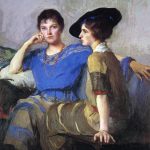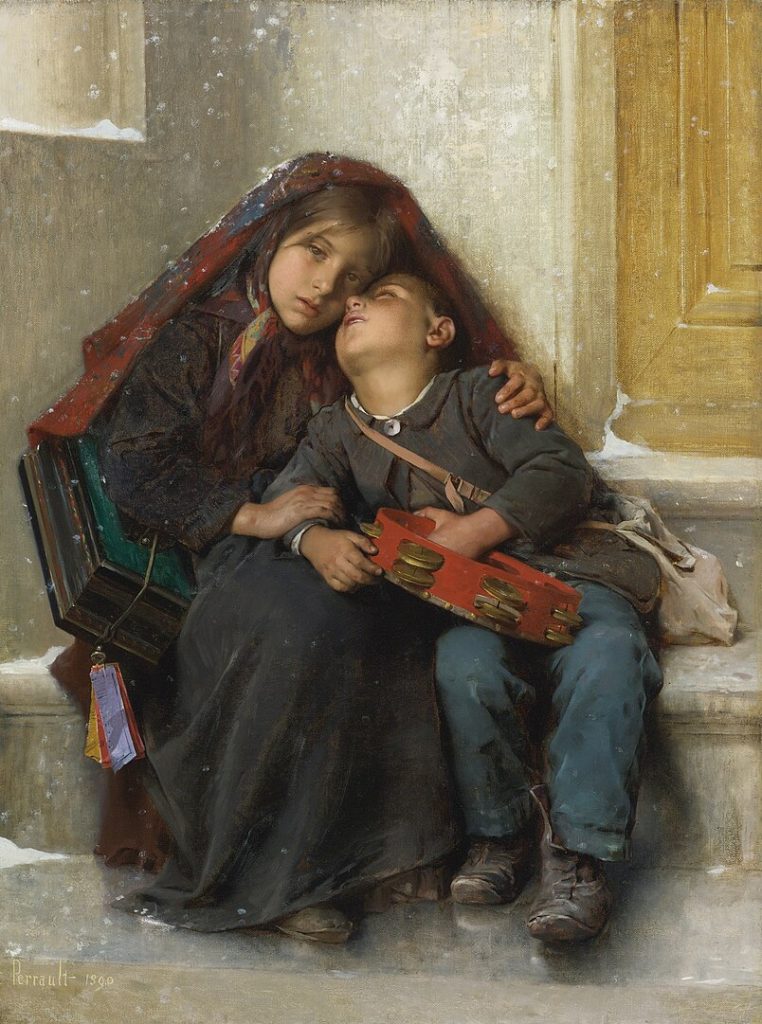
Léon Bazille Perrault, a distinguished French academic painter, was born on June 16, 1832, in Poitiers, France. His life and career unfolded during a pivotal period in art history, witnessing the transition from Romanticism to Realism and the emergence of new movements that challenged traditional artistic conventions. Perrault, with his exquisite portraiture and genre paintings, carved a niche for himself, capturing the essence of French society in the late 19th century.
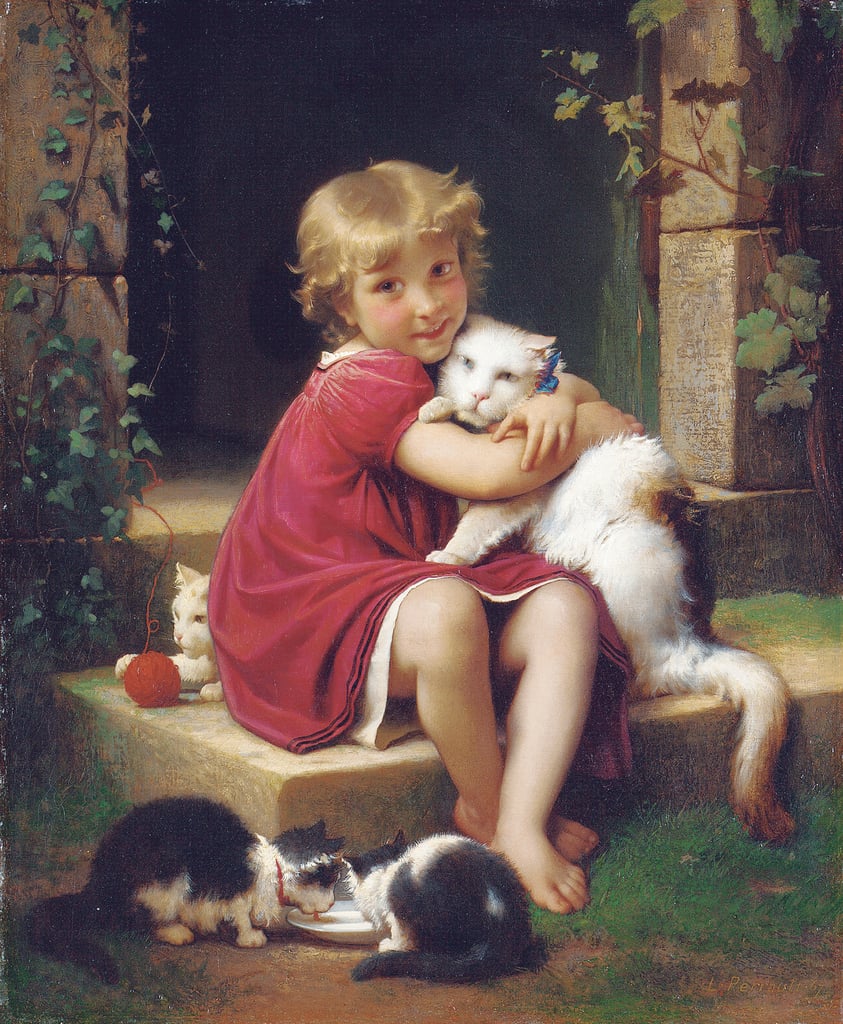
Raised in a cultured and affluent family, Perrault’s early years were marked by exposure to the arts and a nurturing environment that encouraged his creative inclinations. His artistic journey commenced at the École des Beaux-Arts in Paris, where he honed his skills under the guidance of renowned mentors like William Bouguereau. Perrault’s early works demonstrated a mastery of academic techniques and a commitment to the classical ideals upheld by the French art establishment.
The 1850s and 1860s were transformative years for Perrault as he navigated the dynamic art scene in Paris. The city was a melting pot of artistic innovation, with movements like Realism challenging the romanticized depictions prevalent in earlier decades. Perrault, while appreciating the shifts in artistic philosophy, remained dedicated to the meticulous craftsmanship and idealized beauty associated with academic art.
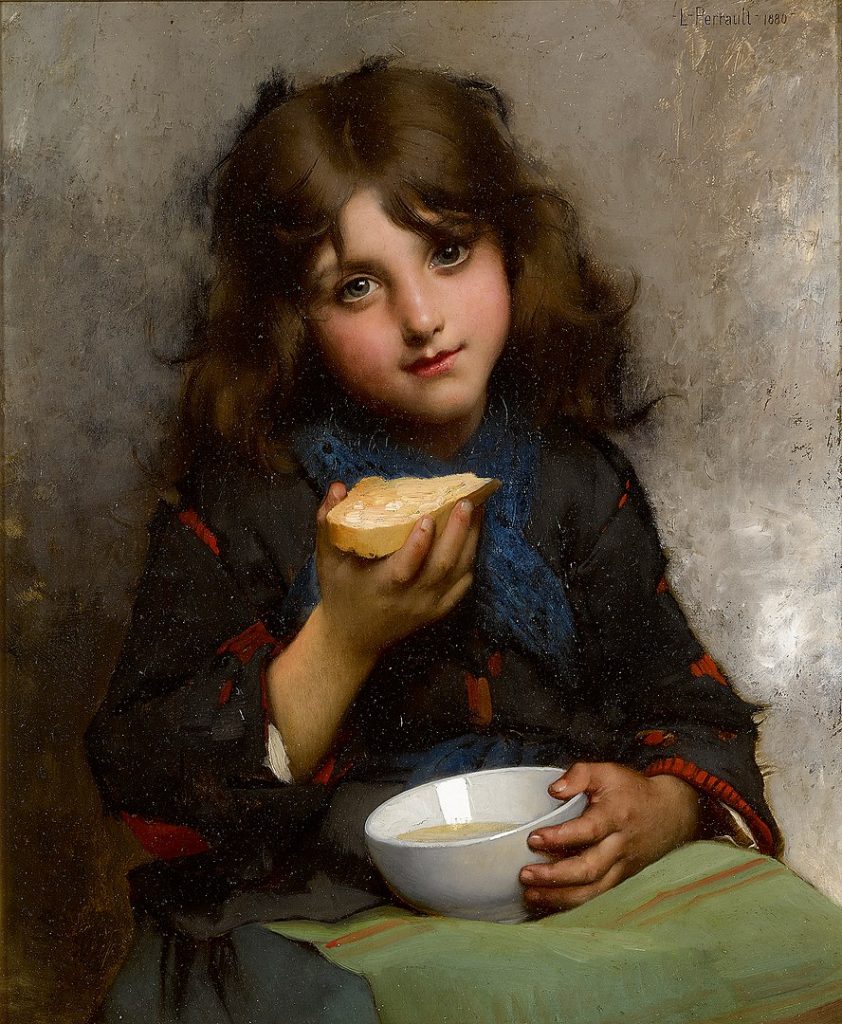
Perrault’s breakthrough moment came with the painting “The Lost Game” (1863), which garnered acclaim for its technical prowess and emotive storytelling. This early success set the stage for a prolific career that would see him become a sought-after portraitist and genre painter. His depictions of elegant women in domestic settings and scenes from everyday life resonated with the cultural sensibilities of the time.
The artist’s commitment to portraying the grace and refinement of the French bourgeoisie found its zenith in his iconic work, “The Reverie” (1868). This painting, characterized by its ethereal beauty and meticulous attention to detail, encapsulated the essence of 19th-century salon painting. Perrault’s ability to capture the nuances of expression and his command over light and color solidified his reputation as a master of his craft.
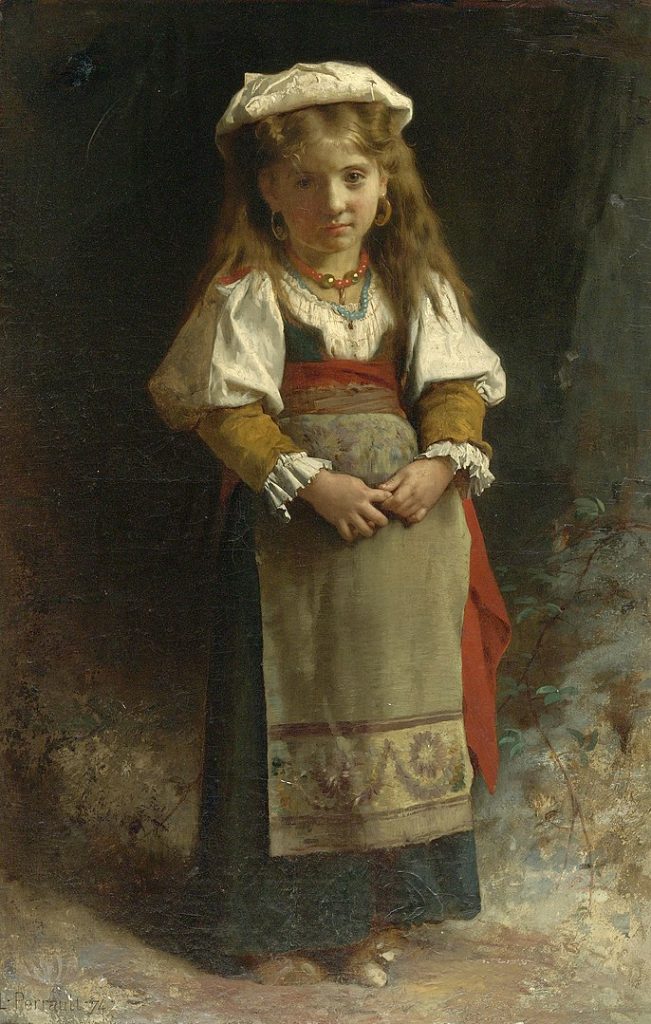
As the 19th century progressed, Perrault’s work evolved, reflecting the changing tides of artistic expression. While he maintained allegiance to academic principles, his compositions began to incorporate elements of naturalism and a more nuanced exploration of character psychology. “The Broken Pitcher” (1885) is a testament to this evolution, portraying a young girl in a moment of innocence and vulnerability, blending idealized beauty with a touch of realism.

Perrault’s success extended beyond the borders of France, with international exhibitions showcasing his art to a global audience. His ability to capture the spirit of an era, coupled with his technical virtuosity, earned him prestigious accolades and elevated his standing in the art world.
In addition to his prowess as a painter, Perrault was an active participant in the cultural milieu of his time. He was associated with the Société des Artistes Français and regularly exhibited at the Paris Salon, contributing to the discourse on the direction of French art. His involvement in these artistic circles also brought him in contact with other luminaries of the period, shaping his views on aesthetics and the role of art in society.
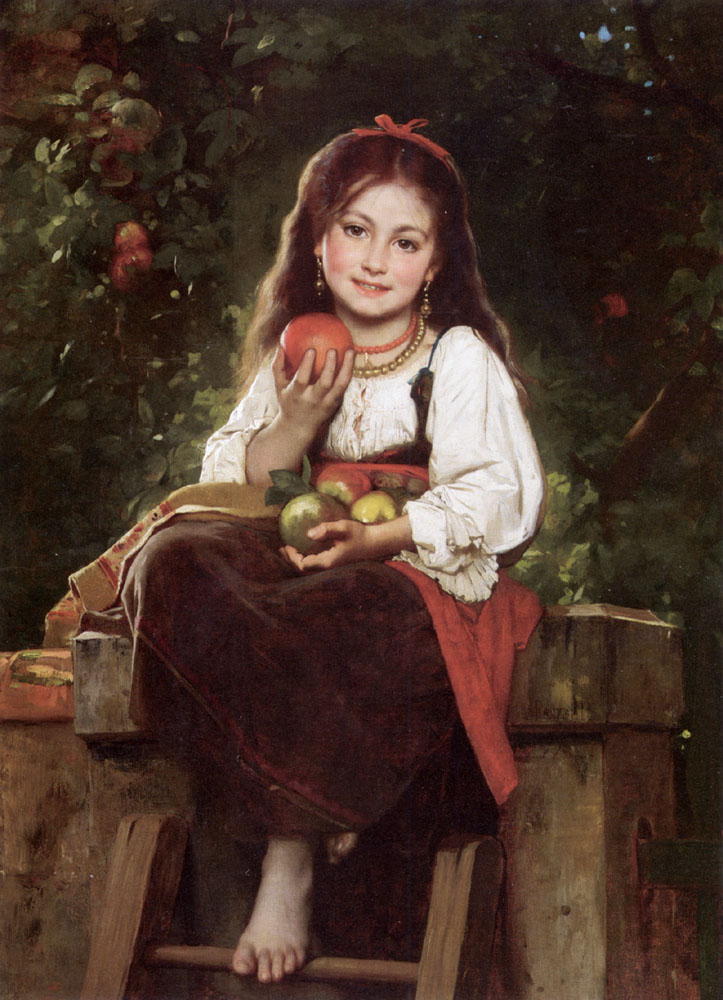
While Perrault’s artistic pursuits dominated his professional life, his personal journey was not without challenges. His marriage to fellow artist Sophie Rude in 1864 brought both joy and sorrow. The couple faced the tragic loss of their daughter, a profound experience that inevitably influenced Perrault’s emotional depth in his later works.
The late 19th century saw Perrault’s continued success, with his paintings fetching considerable acclaim and financial reward. His subjects ranged from intimate portrayals of family life to grand historical and mythological scenes, demonstrating a versatility that transcended the boundaries of genre.
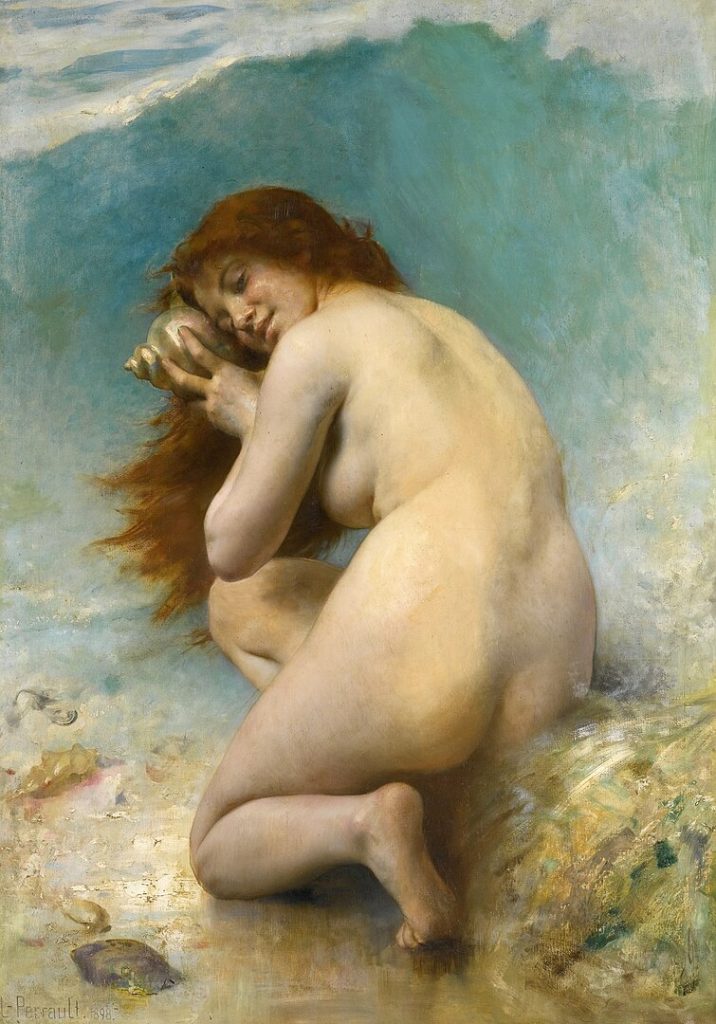
However, as the 20th century approached, the artistic landscape underwent further transformations. Modernist movements challenged academic traditions, and the art world witnessed the rise of avant-garde approaches that sought to break away from established norms. Perrault’s commitment to classical ideals positioned him as a guardian of tradition in an era increasingly enamored with experimentation.
Léon Bazille Perrault passed away on August 1, 1908, leaving behind a legacy of refined elegance and artistic virtuosity. His paintings continue to grace the walls of museums and private collections, testaments to an era when academic art and societal ideals converged in the hands of a masterful painter.
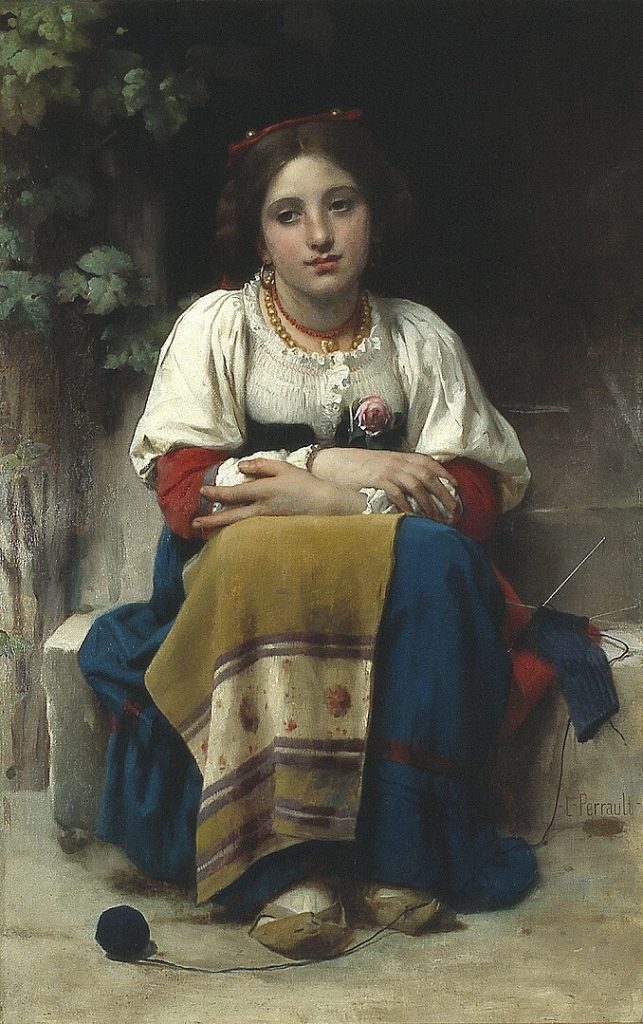
In the annals of art history, Perrault’s legacy endures as a bridge between the academic traditions of the 19th century and the transformative shifts that would define the 20th. His ability to capture the beauty and complexities of his time, coupled with an unwavering dedication to his craft, ensures his place among the luminaries who shaped the narrative of French art during a period of immense change and artistic ferment.






